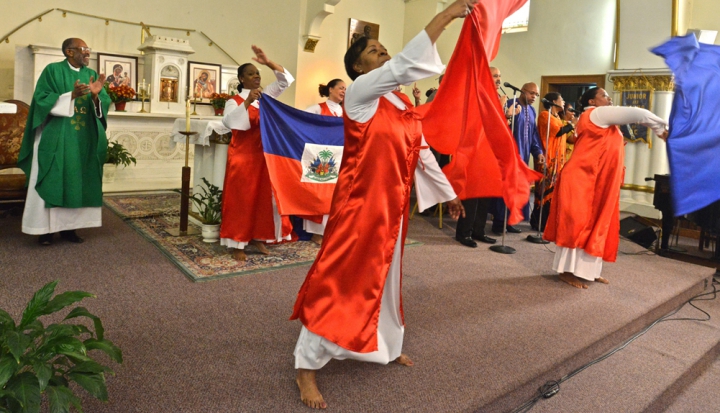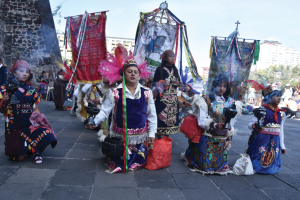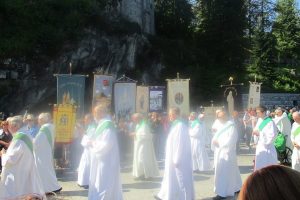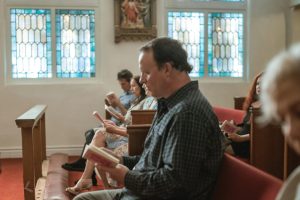As pastor of St. Teresa of Avila Parish in Washington, Msgr. Ray East knows what it takes to create a welcoming, enthusiastic parish. And, as the parish has a large African American membership, East also knows how much black spirituality can contribute to the life of the community.
In these excerpts from an interview we conducted with him for our March 2014 issue, East discusses the life of the Black Catholic Church and what we all can gain from it.
Could you talk about the experience of the Black Catholic Church today?
In the United States, our experience as Black Catholics is a minority within a minority. African Americans are about 18 percent of the American population. Within the larger population we’re a small and increasingly smaller group. Within the African American community, though, as Catholics we’re even smaller. There are probably a million African American Catholics. When you add Haitian Catholics and others from the Caribbean it brings up almost another million. And now one of the fastest growing groups is African Catholics. So when you look at the diaspora you get about three million Black Catholics. But even that is a very small part of the 63 million Catholics.
But what the African diaspora brings to the Catholic faith is what we got from our roots, what we took from the motherland. You see it in Sister Thea Bowman’s beautiful introductory in the Lead Me, Guide Me hymnal. She talks about holistic spirituality. It affects the whole person—body, mind, and spirit.
Our spirituality is concrete. It’s connected to reality. It has to be real. You say, “I couldn’t have a religion that I couldn’t feel. I wouldn’t have a religion that’s not real.” It has to be welcoming and unitive, in the sense that no part of the family—the human family—is left out.
There’s this energy of welcome and inclusion. And it has to be spirit-built. Black Catholic spirituality has to be spirit-built. Meaning that it has to have the presence of the Holy Spirit, expressed in a variety of ways.
What else does the African diaspora bring to the church?
Instead of being formed in one separate mold, we’re able to bring together elements that might not seem to fit together, usually. It’s like a syncopation. It’s a complex rhythm, and very much at home with a lot of diverse elements coming together. Instead of that causing tension, it causes synergy and harmony.
It’s a harmony that comes from diversity. Then there’s always the passion for justice that comes out of that. Those elements of African American spirituality, of African American Catholic spirituality, have deep African roots. So when we think about these, when we reflect on them, they go back. That’s what we hold in common with the African diaspora.
Though people are from the Caribbean, from Africa, and from the United States, they come together and they see so much in common. They see the need to build bridges. But those elements of black spirituality really are distinct. Pope Paul VI said it, when he made his first visit to Africa. It’s been echoed by Pope John Paul II and echoed by Pope Benedict: enrich the church with your gift of Africanness.
That gift is welcome. This is a story I tell: Somebody in a group went over to Rome during the African Senate. While they were there, someone said, “You’re going to be singing ‘Amazing Grace’ or one of these songs. Holy Father likes to keep things kind of calm. So we don’t want any expressions.”
They start singing “Amazing Grace” in a very strict choral. Then somebody just broke out singing it the way that it would be sung. All of a sudden, they see the Holy Father start smiling, he starts tapping his toe and encouraging everybody. From then on, it was this wonderful eruption of joy. That’s what we mean when we say, “That’s a gift.” African American spirituality and African spirituality is a gift for the whole church.
How can a parish tap into that value and richness if maybe they don’t have an African community, but they want to bring that gift into their parish?
That’s a great question. Often times people say, “We don’t have any of those people in our church.” What we say is, “They’re out there. Would they feel welcome if they came to your parish?” That’s the thing. Why do we do this? We do it because we’re Catholic, with a big C. As the Roman Catholic Church, but also a church connected with 23 eastern churches, all in union. And we do it because we’re catholic with a small c; we’re a universal church. This is a real commandment. It’s part of Jesus’ command to go preach to all nations: Start in Jerusalem, with what the parish already knows. Go to Judea, to your neighborhood. Then go to Samaria, where there was a different culture, a different way of worshipping, and even a different language or dialect.
And then go to the whole world. If Jesus gave us that progression of the spread of the gospel, then we should really be applying it to everything we do. With parishes that maybe aren’t experienced in that, get a sister parish in town, across town. Go out of your way to welcome people who are different than the predominant culture of the parish.
Do things together, pray together. Jack Jezreel would say, “Work outside of church together.” Do the works of justice and mercy, outside. Then celebrate that when you come into church and worship. Eat together. The parish that welcomes eats together. We learn to build bridges by food. That’s one of the best ways we do it.
Children are the best ambassadors. They have the freedom to go forth and to be spontaneous, without putting all the kinds of censorship that we put on ourselves, as we get older. Children are the ones who can learn other languages. Children are the ones who are trilingual and tri‑cultural, who can move easily in different groups, who can build bridges between their parents. Especially when their parents are from different cultures who don’t speak the same languages. It’s the children that can do that. I think that approach is so important to the sharing of the incredible cultural heritage that we have.
And just keep reminding yourself, the birth of our church, when the birth waters broke, it was at Pentecost, when the whole known world, the whole Jewish diaspora was gathered. That’s the birthday of our church. It’s the signature, the hallmark of what it is to be Catholic.
This is a web-only sidebar that accompanies the article “Let the Spirit move you,” which appeared in the March 2014 issue of U.S. Catholic (Vol. 79, No. 3, pages 18-22).
Image: Michael Hoyt












Add comment